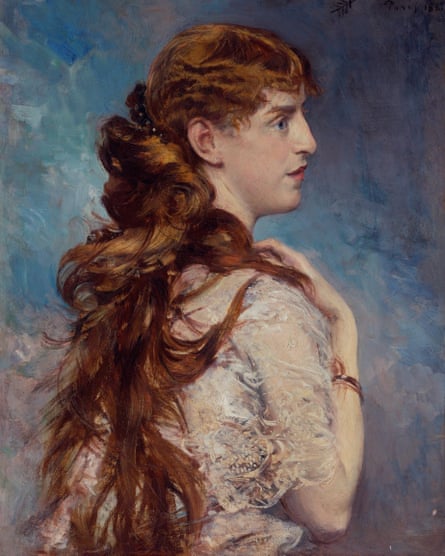It was on his famous 1882 lecture tour of the United States and Canada that Oscar Wilde briefly lost his heart to a woman called “Hattie”.
He wrote to her: “When I think of America I only remember someone whose lips are like the crimson petals of a summer rose, whose eyes are two brown agates, who has the fascination of a panther, the pluck of a tigress, and the grace of a bird. Darling Hattie, I now realise that I am absolutely in love with you, and for ever and ever…”
The identity of “Hattie” has never been known – until now. Matthew Sturgis, the author of a new biography of Wilde, says his research indicates it is very likely to have been Harriet Crocker, the “bright, vivacious, beautiful and rich” 23-year-old daughter of a San Francisco railroad magnate.
“Biographies don’t touch on her or speculate as to who she might be,” he said. “During his time in America, [Wilde] was constantly asked about his private life – although, as he said, he wished he’d had a private life to be quizzed on. He made a few stray references to having met a pretty girl in Washington … but Hattie hasn’t cropped up in those discussions.”
The Crockers were San Francisco nobility. Hattie’s father, Charles, made his fortune as a founder of the Central Pacific Railroad in 1861 and sponsored an impressive new building for music and art. Her uncle had an art gallery in Sacramento, which Wilde visited, and her parents were listed as attending Wilde’s first lecture.
Wilde’s love letter is included in The Complete Letters of Oscar Wilde, edited by Merlin Holland and Rupert Hart-Davis in 2000. Sturgis said: “There aren’t other letters of that sort to other known or unknown girls. So that’s what made me think it was worth trying to track her down.”
Wilde wrote it in 1882, shortly after leaving San Francisco, part of a 10-month tour of North America. Arriving at customs in New York City, he famously said: “I have nothing to declare but my genius.” He also confided to a friend that he had lost his heart in San Francisco.
Sturgis’s detective work involved searching the city’s 1880 census records, looking for plausible Harriets: “Amazingly, there was one girl who came up as ‘Hattie’… Hattie Crocker.” A local press report on one of Wilde’s lectures reported that the hall was “overflowing with the beauty, wealth, intelligence and refinement of San Francisco”, and listed “Mr and Mrs Charles Crocker” among them.
Sturgis, whose new book Oscar: A Life is to be published in October, said: “So it would be very likely that Hattie was there as well … The circumstantial evidence linking the Crockers with Wilde’s tour and his stay in San Francisco is so strong.”

He added: “Standing against a definite identification is the fact that Hattie – according to her family, and to a portrait of her by [Giovanni] Boldini – had blue eyes, rather than brown. It is certainly possible that he misremembered. Hattie had red hair – which may have encouraged him to liken her to a tigress.”
Sturgis said that Wilde’s mother had hoped that he would come home with an American bride. Instead, in 1884, he married Irish woman Constance Lloyd, with whom he had two sons, only to pursue an affair with Lord Alfred “Bosie” Douglas, whose father’s outrage led to Wilde’s conviction for gross indecency. Wilde died in Paris in 1900.
Hattie Crocker, meanwhile, married a wealthy American in 1887 and moved to New York, living in a stately Manhattan mansion, a wedding gift from her father. She travelled in Europe and also died in Paris, in 1935.
Boldini’s portrait shows a woman with dramatic, cascading hair and rather masculine facial features. Sturgis said that, although the actress Lillie Langtry was considered the greatest beauty of that age, it is hard to find an image that reflects that. “Beauty has its fashions … there’s enough circumstantial evidence to support the claim that [Hattie] was regarded as beautiful.”
Merlin Holland, Wilde’s grandson, and an expert on the writer, said the discovery was “absolutely fascinating”.
Sturgis has also found more than 60 new letters. They include one to Alfred Milner, Wilde’s Oxford friend, then working on the Pall Mall Gazette. In the letter, Wilde asks whether he could review art books, saying that “essays on art are naturally what I like to write about”. Sturgis joked: “Milner slightly put him in his place by sending him a book on cookery to review.”

Comments (…)
Sign in or create your Guardian account to join the discussion